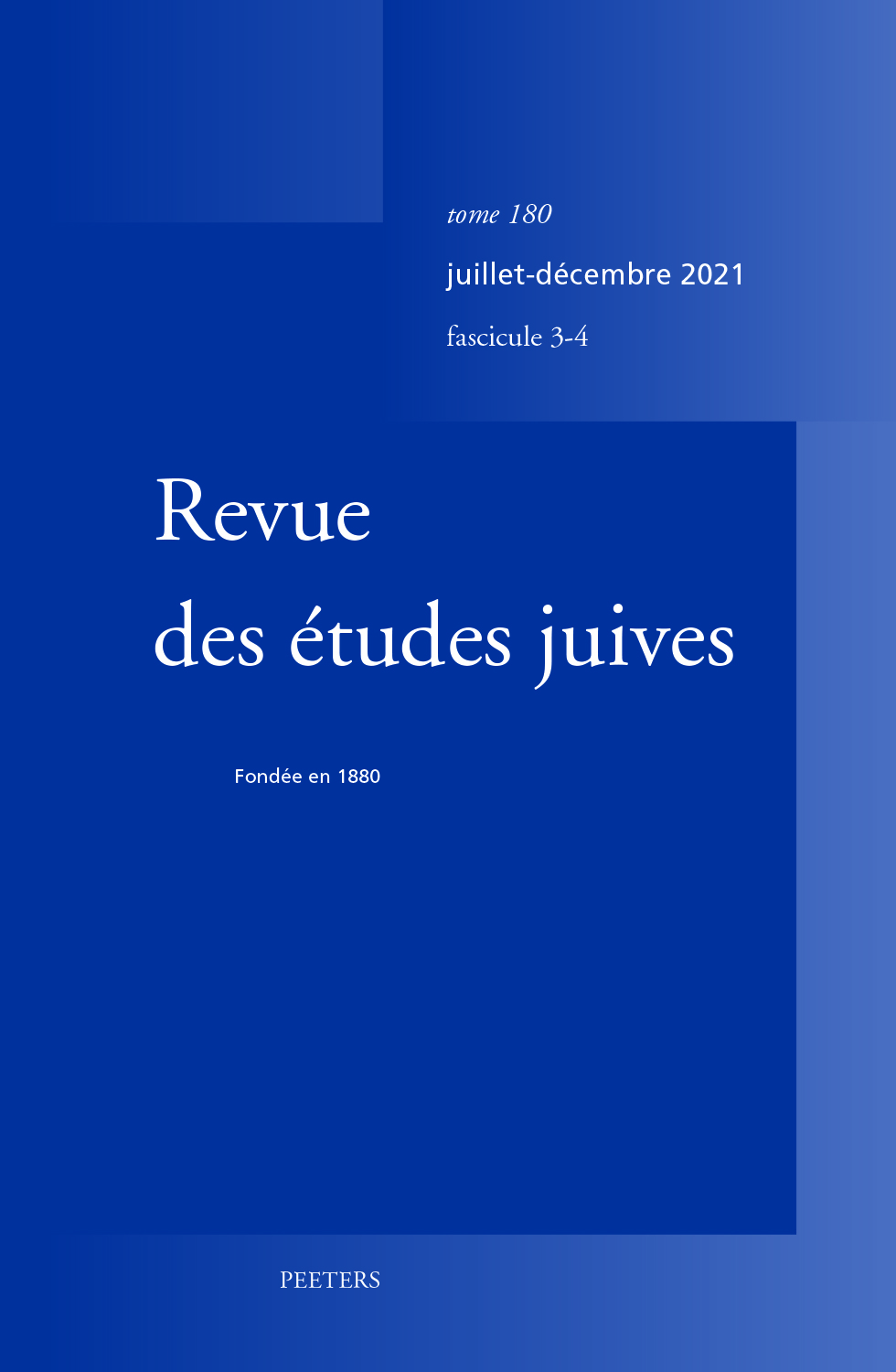 previous article in this issue previous article in this issue | next article in this issue  |

Preview first page |
Document Details : Title: A Recently Discovered Hebrew Inscription in a Structure Identified as a Jewish Ritual Bath in Syracuse, Sicily Author(s): ADLER, Yonatan , ZELDES, Nadia , ENGEL, Edna Journal: Revue des Études Juives Volume: 180 Issue: 1-2 Date: 2021 Pages: 41-70 DOI: 10.2143/REJ.180.1.3289436 Abstract : Beneath the Church of St. Philip the Apostle in Syracuse, Sicily, a Hebrew inscription has recently been found carved into the wall of a stairwell which leads down to a small chamber containing a pool of groundwater. Although the structure has been identified in the past as a Jewish ritual bath (miqweh), some scholars have recently contested this identification, arguing that the site was never in Jewish possession. The importance of the Hebrew inscription lies chiefly in the fact that it provides the first concrete evidence for the Jewish character of the installation. The inscription is published here for the first time, together with the first comprehensive description of the subterranean structure wherein it was found, and a survey of comparable structures found elsewhere in Europe. Historical evidence relating to ownership of the site prior to the expulsion of the Jews from Sicily in 1492 will also be examined. A paleographic analysis of the inscription by Edna Engel is provided as an addendum. C’est sous l’église de Saint-Philippe l’Apôtre de Syracuse, en Sicile, qu’une inscription hébraïque a récemment été découverte, gravée sur le mur d’un escalier qui mène à une petite chambre contenant une mare d’eau souterraine. Bien que la structure ait été identifiée dans le passé comme un bain rituel juif (miqweh), certains spécialistes ont récemment contesté cette identification, affirmant que le site n’avait jamais été détenu par des Juifs. L’importance de l’inscription hébraïque réside principalement dans le fait qu’elle constitue la première preuve concrète du caractère juif de l’installation. L’inscription est publiée ici pour la première fois, accompagnée de la première description complète de la structure souterraine dans laquelle elle a été découverte et de l’étude d’édifices analogues mis à jour ailleurs en Europe. Les données historiques relatives à la propriété du site avant l’expulsion des Juifs de Sicile en 1492 seront également examinées. Une analyse paléographique de l’inscription, par Edna Engel, est fournie en addendum. |
|


